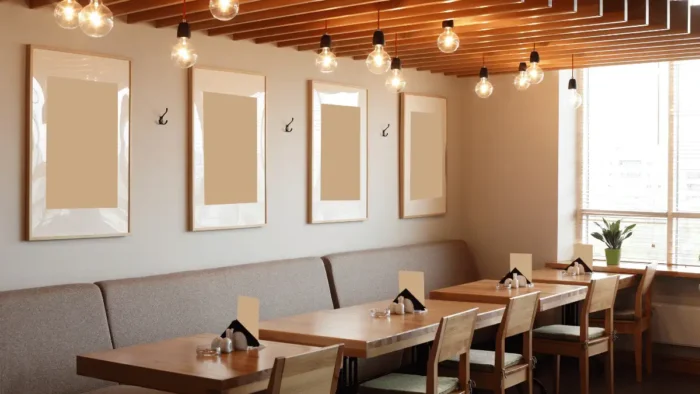The prospect of owning and managing a restaurant is a pipe dream for many ambitious business owners. When the epidemic prompted restaurants to suspend indoor eating or lock their doors permanently, it seemed possible that this ambition might be put on wait for a while. Restaurant owners throughout the country are still feeling the impacts of the coronavirus as the sector battles to get back on its feet after being ravaged by the virus.
In order to survive the current economic downturn, the foodservice industry has embraced new restaurant trends and diversified income streams to meet the current challenge. We designed a restaurant startup checklist to help you get started if you feel that owning your own eatery is still within reach.
Start-up a restaurant needs meticulous preparation and may be made more doable by breaking the process down into manageable phases. If you’re interested in learning more about how to start a restaurant, we’ve put up a brief guide to walk you through the process.
1. Select A Restaurant Concept And Brand That You Like
If you’ve been thinking about starting your own restaurant, you’ve undoubtedly spent a lot of time thinking about the concept for your establishment. The most enjoyable aspect of the restaurant design process is coming up with an idea for your establishment because it allows you to let your imagination run wild. This should include information about the sort of restaurant you intend to operate, the type of cuisine you’ll provide, and the manner in which you’ll serve it (service style). The interior design of your restaurant should be consistent with your overall idea. It is best to use the demographics of the region to develop your business concept if you already have a site in mind for your company and are planning to start operations there. If you’re starting from scratch with an idea, you’ll need to pick a place that has a population that will support your venture.
Related: How to Start a Food Delivery Business from Home
2. Create A Menu For Your Business
When it comes to starting a restaurant, the next creative step is to develop a menu for your establishment. Making selections about selecting menu items to include on your menu should be fun for any foodie, but you should go with caution. Your menu will be the determining factor when it comes to equipment selection, staffing needs, and the sort of clientele to be attracted.
Related: The Rise and Economics of Virtual Restaurants
3. Develop A Business Plan
Starting a restaurant, like starting any other new business, necessitates the development of an effective business plan. If you are inexperienced with business plans and how they are prepared, this stage may prove to be a stumbling barrier for you. There are several sections in a restaurant business plan, each of which describes different facets of your new venture, from your restaurant idea to your financials. The goal of the plan is to assist you in fleshing out the finer aspects of your business while also providing a summary of your company to possible investors. Restaurant business plans are required when seeking financing for your restaurant enterprise. They serve as proof that the operation will be profitable.
4. Obtain Restaurant Loans and Financing
Securing finance for the venture is the next stage in launching your new restaurant. Unless we receive financial aid, most of us do not have enough cash on hand to pay the costs of starting a restaurant from scratch. Whether or not you can turn your goal of restaurant ownership into a reality will be determined by your ability to secure finance from other sources.
Begin by determining the overall cost of opening a restaurant, as well as the expenditures associated with running the business on a daily basis. Make use of this information to develop a budget and predict the overall cost of operating your restaurant for the upcoming fiscal year.
Now that you have your restaurant budget in hand, you can compare the entire cost to the amount of money you currently have on hand to estimate how much additional cash you will require. Keep in mind to include the expenses of licenses, equipment, building upkeep, and employee wages in your calculations.
Related: Guide to Starting a Senior Living Facility or Assisted Living Facility for Entrepreneurs
5. Pick a good Location and Lease a Commercial Space
When it comes to locating a location, we advocate leasing instead of purchasing. It provides you with greater flexibility if you decide to grow your firm or make other adjustments to your operations when you are initially starting out. Take into consideration the following variables that are critical to your success: visibility, demographics, labor expenses, and local rivals (if applicable).
6. Restaurant Permits and Licenses
To open a new restaurant, you’ll need to get a number of permissions and licenses from the federal, state, and local governments. When applying for restaurant permits and licenses, it’s a good idea to consult with an attorney to ensure that you don’t skip any important steps.
7. Plan Your Layout And Available Space
When it comes to creating the layout of your new restaurant, there are two important considerations: the front-of-house area and the back-of-house space. Everyone’s space is different, and they all have different requirements. One of the best practices for casual restaurants is to use restaurant booths in order to create a comfortable atmosphere. If you want assistance, you may consider collaborating with an industry professional to develop a bespoke design plan that matches your specific requirements. When planning your kitchen layout, keep the flow of service in mind and make sure it is functional for the cooks and servers.
8. Locate A Supplier Of Food And Equipment
It is necessary to furnish your kitchen with the appropriate equipment before you can start your brand new restaurant. A few pieces of equipment, such as refrigeration units and cooking equipment, are essential for every restaurant to operate well. You may require specific equipment, such as pizza deck ovens or pasta cookers if you have these items on your menu. Some of your options will be limited by the size and layout of your kitchen.
You’ll also need to locate a source for food, disposables, and any other things that you’ll need to reorder on a consistent basis. It is more cost-effective to work with a provider who gives membership discounts and free delivery when you are ordering large quantities.
9. Employ the Proper Personnel
The recruiting step of establishing a new restaurant gives an excellent chance to establish a positive workplace culture from the first. When addressing the work/life balance of your prospective employees, it is critical to give careful consideration to your employee perks, training programs, and incentive programs. Your staff retention efforts will be more effective if you give the following elements top attention. Begin by appointing members of your management team who will assist you in carrying out your purpose and hiring objectives.
Identify all of the restaurant roles that will be required to run your restaurant on a daily basis and create a list of those positions to fill. Make a plan for how many days you’ll be open each week and how many shifts you’ll have available each day for both the front and back of the house staff. Your new restaurant’s personnel requirements will vary depending on the specific requirements of the establishment.
10. Promote Your Restaurant
In order to attract new clients to your newly opened restaurant, you must first raise awareness of the establishment. A brief description of your restaurant is provided in advertising so that prospective consumers know where you are located and what sort of food you are offering. Successful advertising should also generate interest in your company’s products or services. Create social media profiles for your restaurant on platforms such as Facebook, Twitter, and Instagram to publish news, photographs, and tidbits about the establishment. If your target audience is active on TikTok on a regular basis, the platform may be a good social media alternative for your restaurant to consider.
Conclusion
Opening a restaurant, like any other new small company or startup, may be an exciting and hard endeavor, but it is not impossible. By following these steps, you will be well on your way to starting and growing an incredibly successful business! Despite the difficulties faced in the previous year, the restaurant sector will continue to be a significant component of our economic and cultural life. Make use of our restaurant opening guide to ensure that your unique restaurant idea is successfully implemented.





